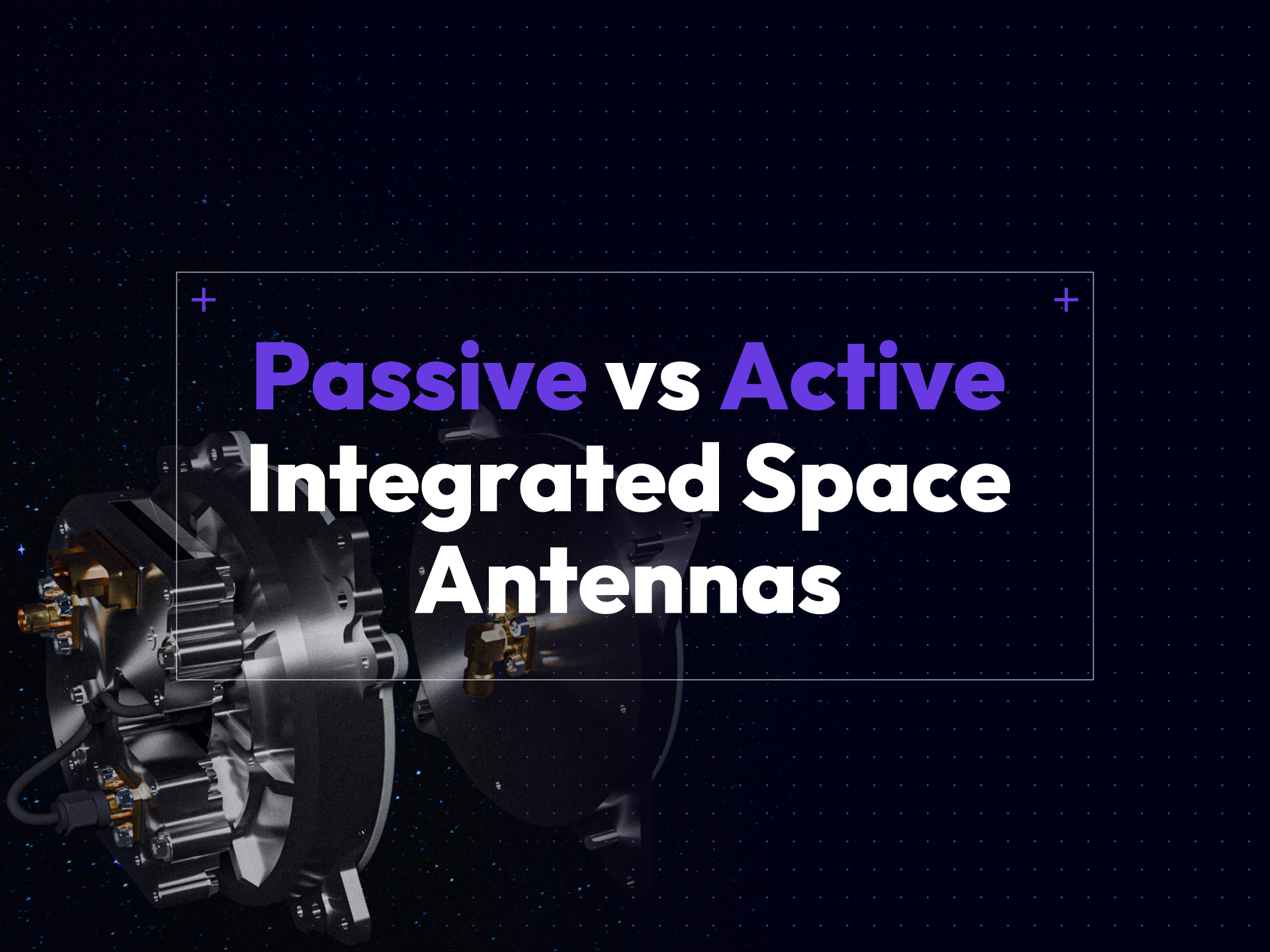Understanding the Radio-Frequency (RF) Chain in Space Antennas
Expert’s insights,
by PhD Antoine Simon
Introduction
Radio-frequency chains play a pivotal role in the domain of wireless communications. If you’ve ever fiddled with a traditional radio, adjusting dials to catch your favorite station, you’ve interacted with an elemental version of an RF chain. Essentially, an RF chain is a series of interconnected components, designed to receive and transmit signals.
Similarly, space antennas utilize an RF chain, comprising various crucial components, to facilitate communication between satellites and Earth-based stations. This article will dissect the RF chain for reception, providing insights into the mechanisms behind the seemingly magical process of space communication.
Radio Frequency Chain Architecture for Reception
Antenna : Capturing the waves
The antenna serves as the first point of contact for capturing or dispatching radio waves. It’s responsible for converting electromagnetic waves into electrical signals or vice versa.
RF Filter: Shaping the Signal
Much like an equalizer adjusts sound frequencies, the RF filter in a space antenna refines the received signal. By filtering out extraneous noise and interference, it ensures that only desired frequencies undergo further processing. This optimization step is fundamental for the clarity and quality of the signal.
Low Noise Amplifier (LNA): Enhancing Signal Strength
Positioned right after the space antenna, the LNA boosts weak signals received from satellites. As signals travel through space, they may encounter various obstacles that lead to attenuation and weaken their strength. The LNA amplifies these weak signals while introducing minimal noise, improving the overall signal-to-noise ratio. By enhancing signal strength, the LNA ensures that even weak signals are reliably received, optimizing the system’s overall functionality.
Downconverter: Converting to Intermediate Frequency
The downconverter converts high-frequency signals received from the space antenna to lower frequencies, known as Intermediate Frequencies (IF). This conversion, achieved by a mixer and a local oscillator, is crucial to the RF chain. The mixer combines the received signal with the local oscillator signal to generate the desired Intermediate Frequency (IF). This frequency conversion allows for efficient signal processing and integration with subsequent stages of the communication system. By downconverting the signal, the downconverter helps filter out unwanted noise and interference, ensuring a cleaner signal for downstream processing.
Intermediate Frequency (IF) Filter: Refining the Signal
Once signals are downconverted, they pass through the IF filter, which further refines them. By targeting specific frequencies within the IF range for amplification and processing, it effectively removes any lingering unwanted signals and noise.
Intermediate Frequency (IF) Amplifiers: Boosting Signal Quality
Intermediate Frequency (IF) amplifiers are employed within the RF chain to further amplify the downconverted signals. Operating at a fixed frequency range, typically lower than the original received frequency but higher than the baseband frequency, these amplifiers enhance signal quality, compensating for losses that may have occurred during signal reception and conversion. By boosting the strength and quality of the signals, IF amplifiers contribute to improved signal fidelity and ensure reliable transmission to the subsequent stages of the RF chain.
Demodulator: Extracting Information
Acting as the culmination point of the RF chain for reception, the demodulator extracts the original data from the modulated waves. It’s akin to the final decoding stage of a radio, converting signals back to their original form for further processing.
Key Factors for an Effective RF Chain in Reception
Three paramount factors underpin a robust RF chain for reception: sensitivity, selectivity, and stability.
Sensitivity: A critical factor, sensitivity determines the chain’s ability to capture and process weak signals. A sensitive RF chain ensures that even the faintest of transmissions can be discerned and decoded.
Selectivity: This pertains to the chain’s capacity to distinguish the desired signal from potential interference. By utilizing sophisticated filtering techniques, the RF chain can minimize noise and prevent signal distortion.
Stability: Reflecting the RF chain’s reliability, stability ensures consistent performance, even under adverse conditions.
Impact of Antennas on the RF Chain
Antennas, particularly space antennas, hold significant sway over the efficacy of the RF chain. The design, orientation, and tuning of an antenna can drastically influence the signal-to-noise ratio, gain, and overall performance of the RF chain. Specifically, in space communication, antennas need to cater to a variety of challenges: from the vastness of space, cosmic interference, to the sheer distance signals need to travel.
A well-designed space antenna can significantly amplify the efficiency of the RF chain. By optimizing the antenna’s radiation pattern, we can ensure targeted and efficient signal transmission and reception, which is especially crucial in a vast expanse like space. Moreover, an efficient reception chain can significantly optimize a satellite’s energy consumption. This optimization, in turn, influences the size of the batteries and solar panels needed, consequently affecting the satellite’s overall mass and thereby reducing the total cost of the satellite.
Conclusion
In conclusion, the RF chain stands as a cornerstone in wireless and space communications. Its intricacies and components, especially the antenna, dictate the quality and reliability of communication. At Anywaves, we pride ourselves on our profound understanding of RF chains and our specialization in designing state-of-the-art space antennas. Dive deeper into our blog section to explore the expanse of our expertise!
Contact
us
If you have any question, we would be happy to help you out.


